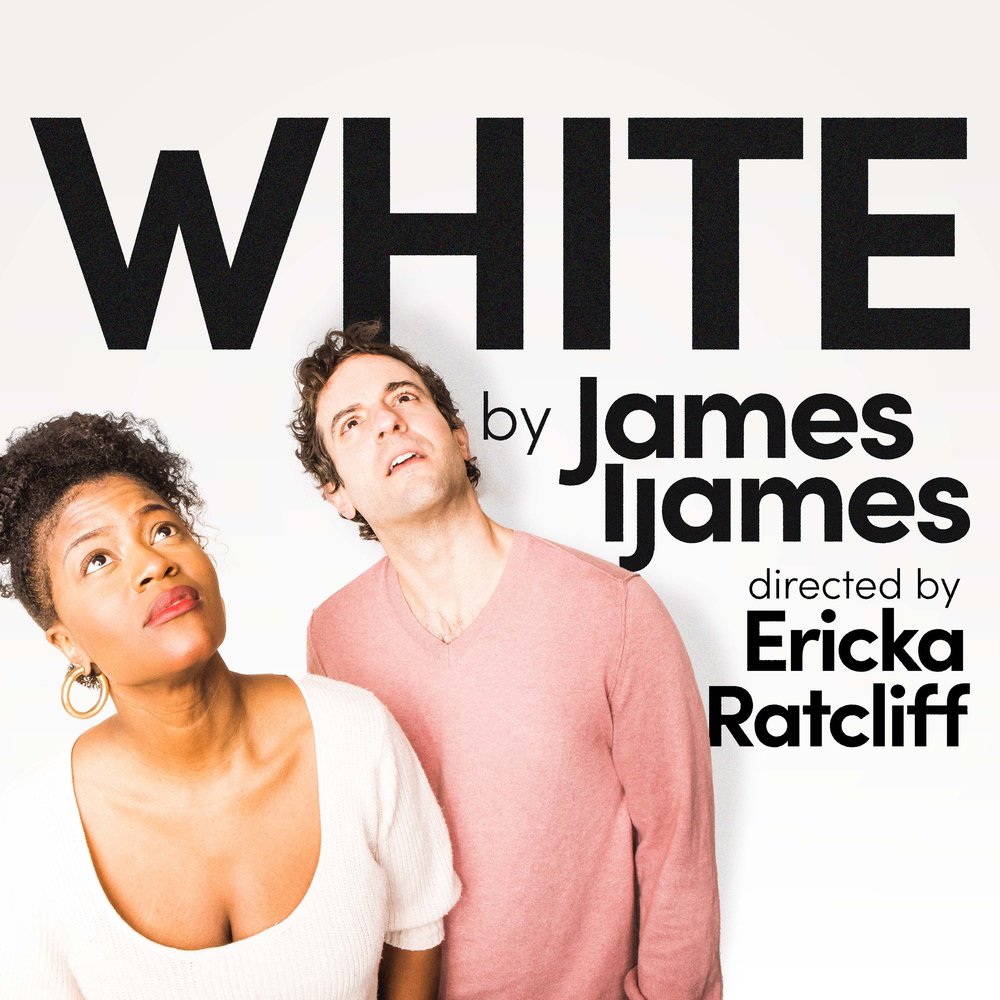
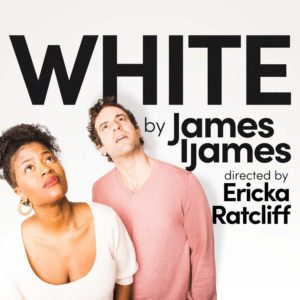 [rating=5]The Chicago premiere production of “White”, directed by Ericka Ratcliff, is a brilliant gem. The perceptive and tidy script written by James Ijames has to do with issues surrounding diversity, equity, and inclusion. The story is based on the notion of “white privilege” and the theme that a white man not only has the luxury of being able to define who and what he is but also has the power to define the other people around him. This show points up the cultural clash inherent when people of different racial backgrounds perceive of their lives and their interactions in different ways. Briefly, this 90-minute play is a wake-up call for those clueless about unconscious racism in American society, and this serious theme is approached in a marvelously light-hearted way via the personalities of each of the four characters.
[rating=5]The Chicago premiere production of “White”, directed by Ericka Ratcliff, is a brilliant gem. The perceptive and tidy script written by James Ijames has to do with issues surrounding diversity, equity, and inclusion. The story is based on the notion of “white privilege” and the theme that a white man not only has the luxury of being able to define who and what he is but also has the power to define the other people around him. This show points up the cultural clash inherent when people of different racial backgrounds perceive of their lives and their interactions in different ways. Briefly, this 90-minute play is a wake-up call for those clueless about unconscious racism in American society, and this serious theme is approached in a marvelously light-hearted way via the personalities of each of the four characters.
The performance starts out with the stereotyped white liberal museum curator Jane Forsyth (Carley Cornelius), who parades the audience through a projection of famous paintings that her art museum holds in its collection, all of which have taken on new names, features, and descriptions. Thus from the moment we walk into the theatre, we know that this show is meant to be funny. Shortly afterwards, we learn that the museum is pleased to display the paintings which Gus (understudy Andrew Lund) has created, although the audience cannot fail to see that his canvases are not much to speak of. Good, bad, or otherwise, all his work is plain unadorned white; he uses some texture but no other color. The point being made is that these canvases are supposed to be an expression of himself, reflecting the person he is, namely, a man who identifies as being white. Though Gus’s works are considered to be excellent, the curator recognizes that they hang in a museum whose holdings are largely a product of white men. So as to make her mark on the art collection, Jane wants to move the museum in a new direction: Her plan is to reject Gus’s next creation (which is as good as the others) and instead focus on getting a minority artist into the exhibition, specifically an African-American woman. Gus feels discriminated against, but Jane is clear that the museum’s collection has to become more diverse, and she must draw on new talent.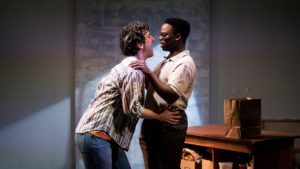
Gus is definitely not okay with this, but he then gets the idea to hire an African-American actress named Vanessa (Kierra Bunch) to become his protégé and get his “white works” into the museum. Vanessa, as it turns out, is the “middle class version” of this young actress’s nimble personality; her name being taken from a female character on the “Bill Cosby Show”, the television staple that garnered a huge crossover following in the 1980s. Once Vanessa agrees to Gus’s bargain to pose as a fine artist (which she never was trained as), she subsequently morphs into her alter-ego Balkonaé. Suddenly Gus’s totally white painting is turned into the white cotton on the plantation and all the suffering that goes along with it. Once Balkonaé/Vanessa plays the part of an artist who’s into “black bitch expressionism”, Jane, the white liberal, eats it all up! And the more Balkonaé delves into her ebonics, her African-styled clothing, and her (invented or reinvented) emotional gangsta—and the further Gus loses control over the actress he hired—the more we see cultural appropriation and confusion when it comes to people’s expectations for each other’s behavior. I don’t want to spoil the surprise and reveal where the play goes, except to say that the story represents a fight for the young actress’s identity and her soul.
Gus has a minority identity too in that he is a gay man, who lives with his partner Tanner (Jonathan Allsop), who happens to be black. Even though they have a loving relationship, it is clear that Gus does not fully comprehend the lived discrimination that Tanner has had to go through to achieve whatever success he has had in life. Tanner puts it well (and I paraphrase here): “If you’re white, you can afford to make mistakes. If you’re black, you have to get it right the first time.” If there is any one flaw in the show, it is that their physicality gets somewhat too blatant. It is unnecessary to the plot but doesn’t detract from it.
The best part of the performance is watching Bunch’s versatility in playing an array of characters. She amuses us to the nth degree with her chameleon-like portrayal of Diana Ross to Phylicia Rashad (from the Cosby Show) to the gritty and self-possessed Balkonaé. What an amazing and inspiring entertainer! She is so convincing, especially with her facial expressions. She truly makes the show! Lund too is a fine actor and good match for her power. As Gus, he stubbornly and constantly asserts that the world must view his artwork; this is the engine that moves the story along.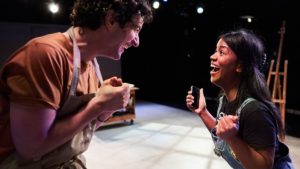
The staging for this production is not all that satisfactory, considering that the stage is set up a bit like a bowling lane, with the audience seated along the sides of both gutters. This means that we have to frequently turn our heads as the scenes shift from one end of the stage to another, especially to witness the various canvases that Gus has painted. As a consequence of the way the stage is set up, a lot of the projection design is lost too. The lighting design by Lew Williams makes up for some of this, as it brings out the emotions within the various characters. Especially wonderful is Rea Brown’s costume design, particularly the outfits and wigs worn by Bunch in her various roles. A shoutout also needs to be made to intimacy director Gaby Labotka and assistant intimacy director Kayla Menz, for establishing the limits of close contact among some of the characters. Sound design by Willow James is great, and the original musical compositions by JQ at the beginning and end of the show are nicely appropriate.
There are no easy answers to the difficult questions raised by this highly creative comedy. The clever banter about issues concerning race and sexuality makes the audience constantly laugh (although some of the dialogue fell differently on different ears, depending on the background and experiences of those doing the listening). Most importantly, the show brings up issues of identity. Considering that Balkonaé/Vanessa is being defined by everybody around her, who is the person she really is? Can she truly find herself? When viewing her character and that of Tanner side-by-side, this leads the audience to wonder about the extent to which some black Americans think of themselves as having become much too acquiescent to mainstream white culture. In other words, can one act “too white?” And is there an authentic black culture? Furthermore, Jane’s rejection of Gus’s latest work implies the question: Who sets the standards for how an artistic creation ought to be evaluated? And then, can there be racism against whites—or only against minority groups, considering that whites have traditionally been the majority in power?
Considering the wealth of timely and relevant issues which this play brings up, it comes highly recommended. You too will become enamored with Balkonaé/Vanessa, but perhaps for reasons that differ from those of Gus and Jane. Ultimately, the play is a joke on itself, and this production is definitely a MUST SEE!
Definition Theatre’s production of “White” is playing at the 1700 Theatre at the Steppenwolf, 1700 N. Halsted Street, Chicago, through April 10, 2022.
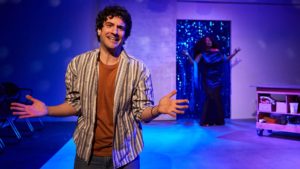 Tickets are $20 – $40.
Tickets are $20 – $40.
Performance schedule:
Thursdays and Fridays – 8:00 p.m.
Saturdays – 3:00 p.m. and 8:00 p.m.
Sundays – 3:00 p.m.
There will be a post-show discussion following each of the Sunday matinee performances.
To purchase tickets for “White”, please visit: https://www.steppenwolf.org/tickets–events/lookout/22-spring/white/ or call their Audience Services team at 312-335-1650 for assistance.
For more information about “White”, go to: https://www.definitiontheatre.org/shows/white.
For general information about Definition Theatre, visit: https://www.definitiontheatre.org/about.
“White” is a part of Steppenwolf’s Lookout Series. For more information go to: https://www.steppenwolf.org/lookout.
COVID-19 restrictions are still in effect at the Steppenwolf Theatre. Guests must show proof of vaccination and an ID card to enter the venue. Masks must be worn at all times during the performance.
Note that Definition Theatre will soon be building a theater and community center at 6400 South Cottage Grove in Woodlawn with a $1.6 million seed grant from the City of Chicago’s Neighborhood Opportunity Fund.
To see what others are saying, visit www.theatreinchicago.com, go to Review Round-Up and click at “White”.



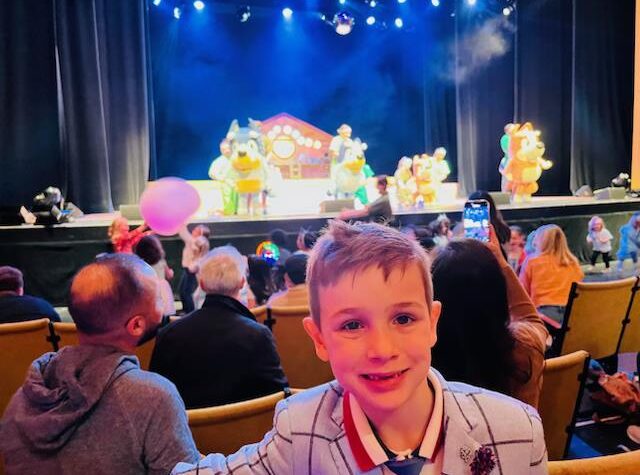
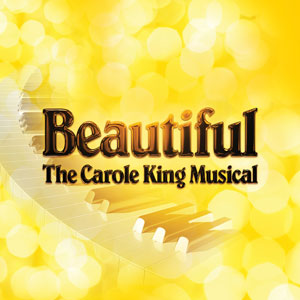

More Stories
“Judgement Day”
“Bluey’s Big Play” reviewed by Tommaso Casati
“Beautiful: The Carole King Musical”